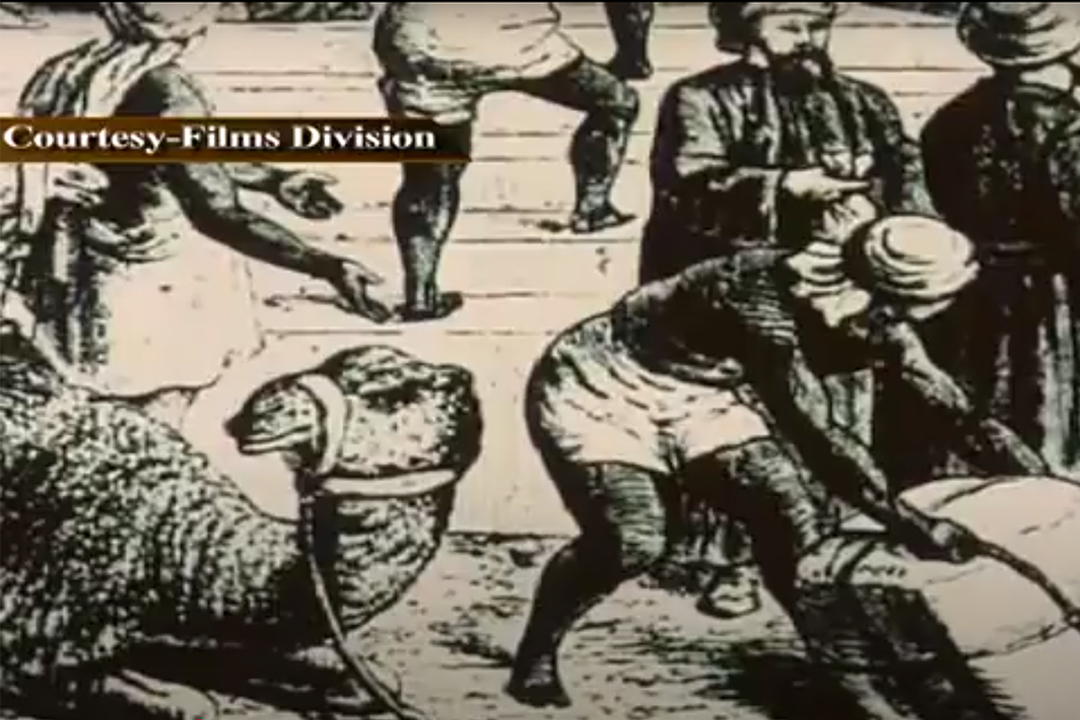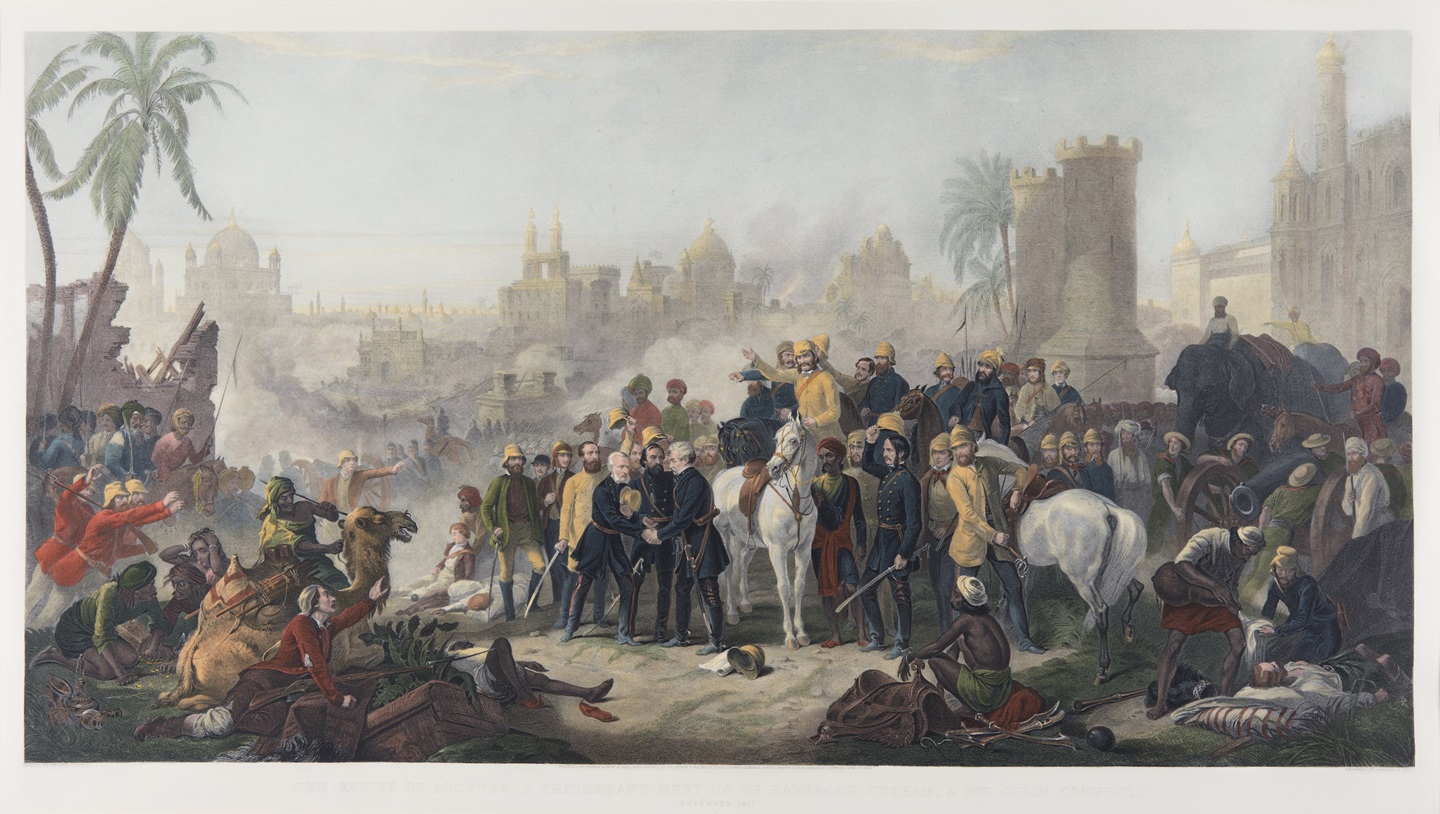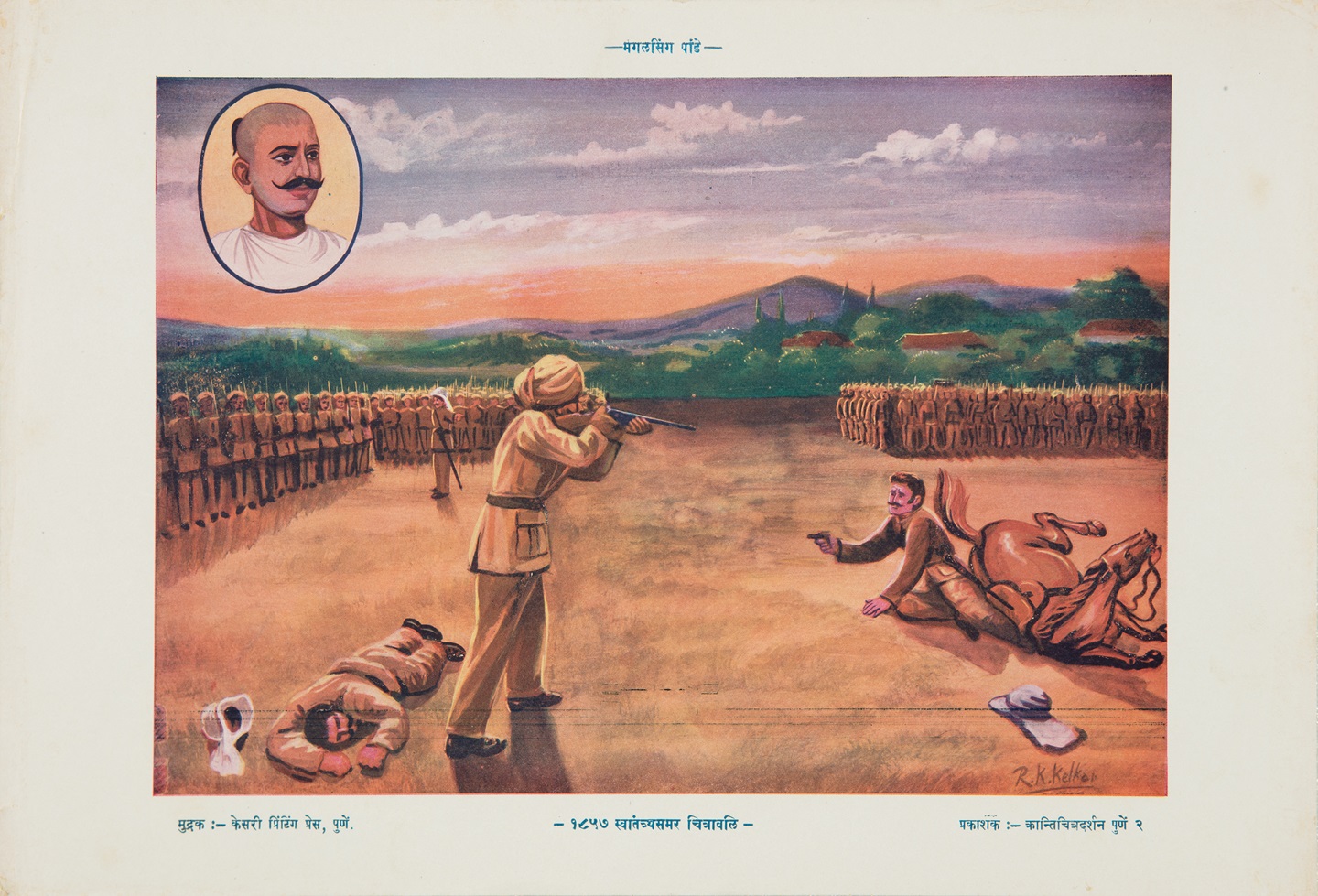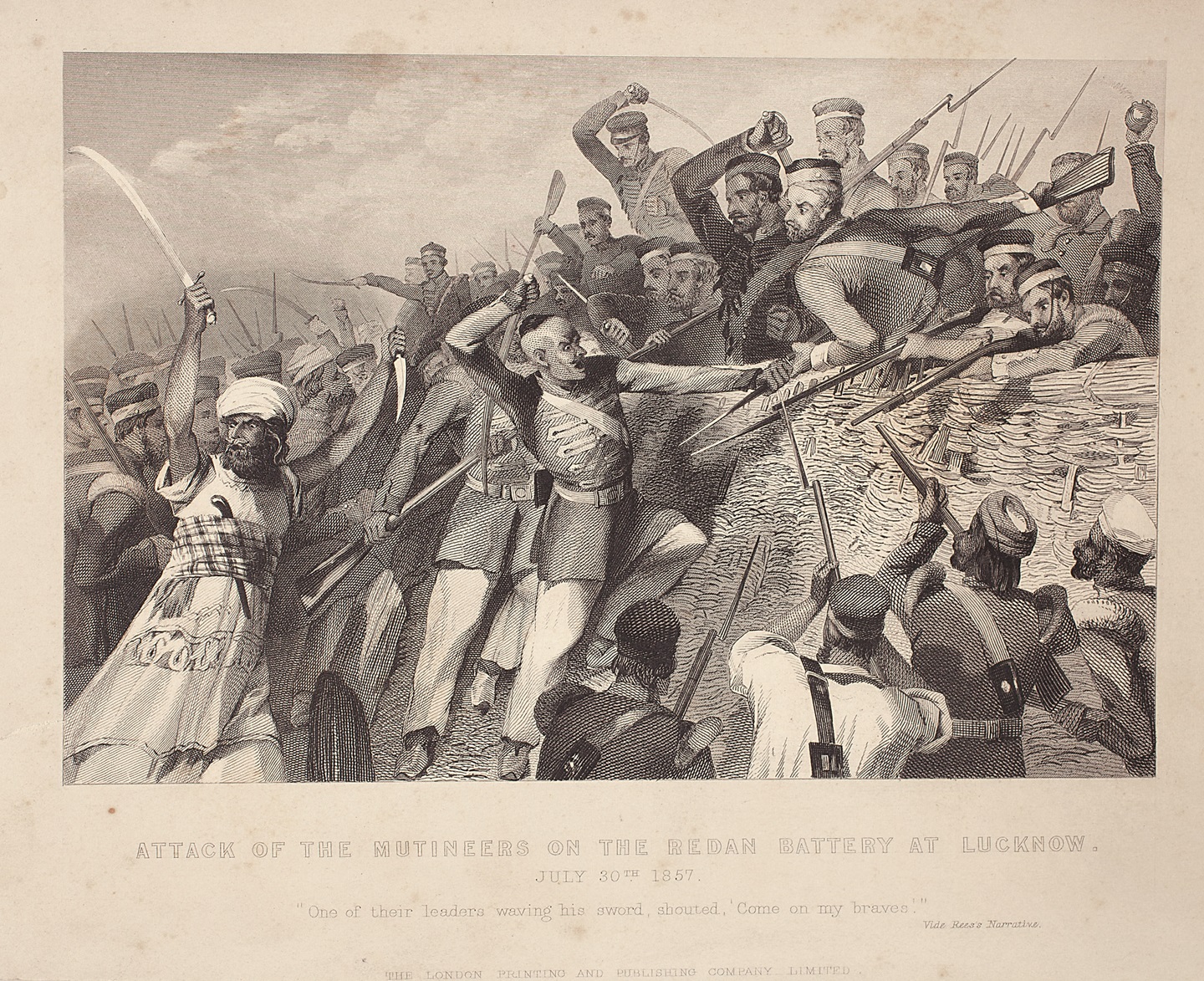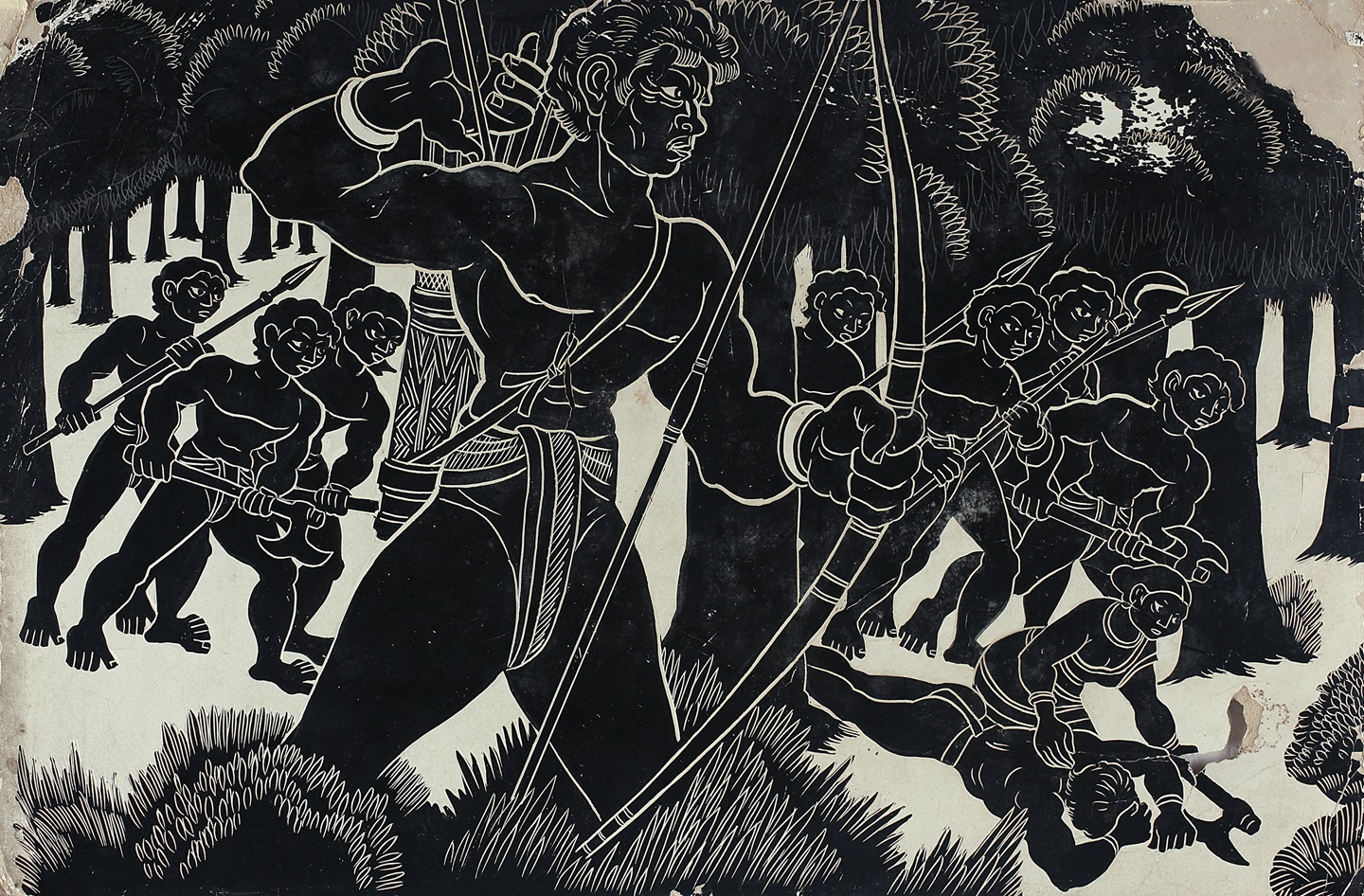Battles for Freedom
THOMAS J BARKER
The Relief of Lucknow & Triumphant Meeting of Havelock, Outram, & Sir Colin Campbell, November 1857- 1860
Engraving, tinted with watercolour on paper
27.5 x 49.2 in.
R. K. KELKAR
Mangal Singh Pandey, 1857 c. 1910
Offset print on paper
Print: 8.7 x 11.5 in. and Paper: 10.0 x 14.7 in.
ANONYMOUS
Attack of the Mutineers on the Redan Battery at Lucknow 1857
Etching and aquatint on paper
6.0 x 7.0 in.
CHITTAPROSAD
Untitled
Ink on scraper board
9.7 x 14.7 in.
The Beginning - 1857
Courtesy: Films Division
Delve into a cinematic journey as the narrator accounts the uprising of Indian rebels and how small events, for varied reasons, from across the nation, gained momentum and grew into a massive popular movement against British colonialism.
Do you think it was a mutiny? Or will you consider this as India's first war of independence?
Canning Indian Mutiny Collection
Museums Victoria Collection
Arms and weapons stand as enduring symbols of conflict and warfare. The collection of arms of Indian rebels, collected by the British as war booty, now displayed at Victoria Museum, is the tangible evidence of the uprising of the soldiers in 1857. Though these arms may not have matched the advanced weaponry of the British forces, they embody the indomitable spirit of the Indian rebels, who fought with unwavering courage and determination.
Bahadur Shah Zafar’s Poem About The 1857 Revolt & Dilli-The Garden Of Harmony
Rana Safvi Translates Zafar's Poem
Bahadur Shah Zafar, the last Mughal emperor of India, vividly captures the anguish and oppression during and after the 1857 revolt with his poetic skills. Imprisoned and deprived of writing materials, Zafar's scribbling ghazals with charcoal on the walls of his room reflect the sacrifices made during the First War of Indian Independence. Discover the significance of this poem in honouring the memories of those who fought for freedom.



